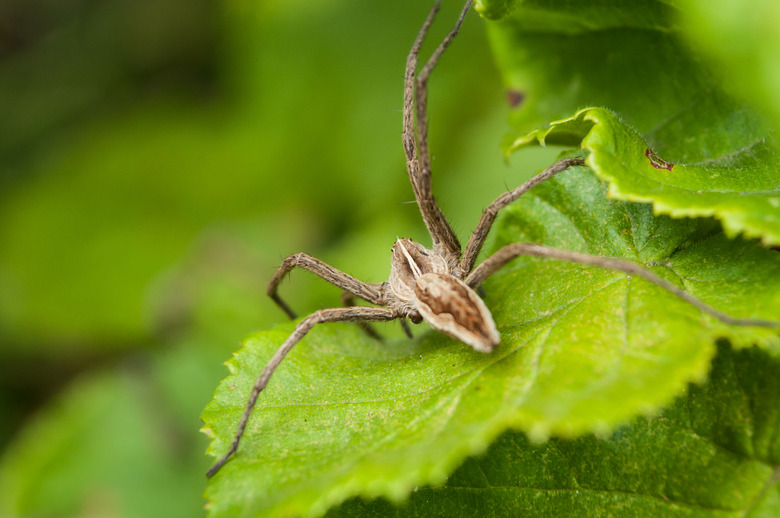How To Kill And Get Rid Of Hobo Spiders In Your House
We may receive a commission on purchases made from links.
The long-legged, light brown spider skittering across the floor or in your kitchen sink may be a hobo spider (Eratigena agrestis, formerly Tegenaria agrestis) or another member of the spider family Agelenidae. Despite their rumored reputation for venomous bites, hobo spiders are generally harmless. Whether you prefer to rehome or permanently remove the spider from your home, there are several methods you can use to take care of your arachnid problem.
About Hobo Spiders
About Hobo Spiders
The hobo spider originated in Europe and is not the same species as the notorious Australian hobo or funnel web spider (spider family Hexathelidae), which is highly aggressive and venomous. The European hobo spider, which ranges from 3/8 to 9/16 inch long including its long legs, hitchhiked to the Pacific Northwest in the 1930s, possibly on a cargo ship. It is found in homes, in wood piles, and on rock or concrete retaining walls across the Pacific Northwest, including British Columbia and as far east as Wyoming and south to Nevada. It builds a funnel-shaped web that is wide at the top and narrow at the bottom, where it waits for its prey.
The eggs hatch in spring, so tiny baby spiders may be found outside and around the home at that time. The adult female spiders tend to stay in or near their webs, while the male spiders roam in late summer and early fall in search of mates. This is when you're most likely to find a mature hobo spider inside your home. While the life span of the hobo spider ranges from one to three years depending on the climate, male spiders die after mating, and females usually die after laying their eggs.
Hobo spiders can't climb slick surfaces, which explains their presence in bathtubs and sinks. They can't get traction on the smooth porcelain surface to escape. While the spider in your house may be a hobo spider, if you live outside of its habitat, it may be another member of the arachnid family, such as a grass, house, or wolf spider. A definitive determination may require a microscope, as hobo spider features, like eyes, markings, and coloration, are similar to other spiders. In any case, removal and elimination methods are the same.
Methods of Cultural Control
Methods of Cultural Control
Keep hobo and other spiders out of the house by sealing all cracks in the foundation and around windows with caulking or silicone sealant. Repair or replace damaged window screens. Install or replace weatherstripping and door sweeps to prevent spiders from entering the home. Keep debris, grass, weeds, and other vegetation away from the foundation so the spiders and their prey have no place to hide.
Inside the home, sweep and vacuum regularly to remove spiders and egg sacs. Reduce clutter and seal boxes with packing tape to minimize hiding places for spiders and other insect pests. Put sports gear, gardening gloves, and other stored items in plastic bags or bins and seal tightly to keep out spiders.
Hobo Spider Removal
Hobo Spider Removal
Removing a hobo or other spider species without harming it is relatively easy. Wash and save a plastic peanut butter or mayonnaise jar and cut a square of paperboard from the side of a cracker or cereal box. Place the jar over the spider and carefully slip the paperboard under the open edge and spider so the spider is trapped inside. Take the jar outside and shake the spider into tall grass or other vegetation, preferably well away from the house foundation.
Hobo Spider Elimination
Hobo Spider Elimination
Methods for killing spiders range from a quick blow with a shoe or flyswatter to insecticidal sprays. While sprays kill spiders by direct contact, hobo spiders are quick and can dash across previously treated steps and through doorways without being affected by the residual poison from the spray. Alternatively, you can puff diatomaceous earth or a pyrethroid insecticidal dust in cracks and crevices and inside walls, where humans and pets won't come in contact with the product.
Sticky traps designed to catch spiders are readily available. Place the spider traps on the floor along walls, inside closet doors, and behind furniture. Be sure they are out of reach of children and pets. When full, place them in the trash.
References
- Utah State University Extension: Hobo Spiders (Eratigena agrestis)
- University of California Statewide Integrated Pest Management Program: Hobo Spider
- Oregon State University Extension Service: Are Hobo Spiders Really Dangerous?
- University of California Statewide Integrated Pest Management Program: Spiders
- Orkin: Funnelweb Spider Facts & Information
